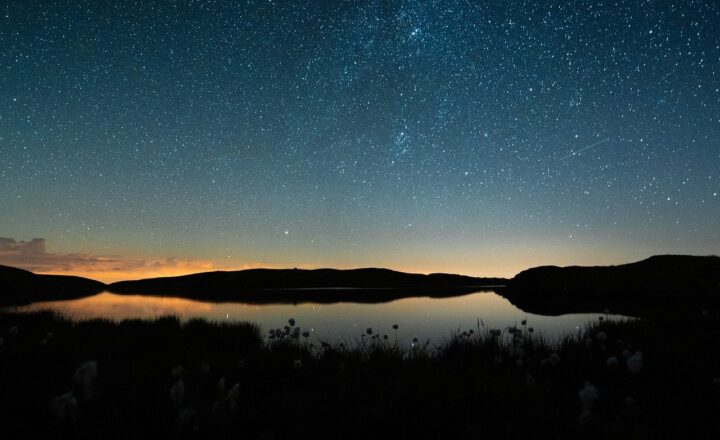The Role of Space Exploration in Ancient Myths vs. Today’s Science
November 15, 2024

Throughout human history, our fascination with the cosmos has sparked curiosity, imagination, and awe. From ancient civilizations depicting celestial events in myths and folklore to today’s robust scientific explorations of the universe, the journey from the mythological constructs of space to tangible scientific endeavors reflects humanity’s unending quest for knowledge.
1. Ancient Myths: The Cosmos in Our Collective Imagination
Myths have always played a critical role in shaping how civilizations understand and interpret the universe. These stories encapsulated human experiences and fears, empowering societies to connect cosmic events to earthly phenomena. Ancient cultures crafted elaborate narratives surrounding celestial bodies, often attributing them with divine significance and personalities.
For instance, the ancient Greeks saw the night sky as a canvas painted by the gods. The constellation Orion was not just a pattern of stars; it represented a great hunter, while other constellations depicted various mythological figures such as Zeus and Persephone. Such myths allowed the Greeks to understand natural events (like seasons) through storytelling.
Similarly, in ancient Mesopotamia, the movements of celestial bodies marked their calendars, and from these observations emerged the zodiac signs. The Egyptians made sense of the annual flooding of the Nile by aligning it with the heliacal rising of Sirius, explaining both the floods and the role of deities like Isis. These mythological interpretations provided order, an explanation of the mysteries that surrounded them.
In these ancient societies, space was perceived as an extension of the divine, where celestial occurrences were intrinsically linked to human affairs. The night sky was a reflection of humanity’s aspirations, a reminder of their place in a larger, sometimes unfathomable universe.
2. From Myths to Reality: The Birth of Modern Astronomy
The Renaissance marked a significant turning point in human understanding of space. Figures like Copernicus, Galileo, and Kepler began to challenge the mythological narratives dominant in earlier times, leading to a more evidence-based approach to astronomy. The invention of the telescope allowed for empirical observations of celestial bodies, dismantling geocentric models and advocating for heliocentrism.
Galileo’s observations revealed moons orbiting Jupiter, providing overwhelming evidence that not every celestial body revolved around the Earth—a radical shift from prior beliefs. The work of Sir Isaac Newton further connected spatial phenomena with observational science, leading to laws of motion and universal gravitation that could be tested and validated.
As science advanced, celestial myths began to be replaced respectively with facts and principles grounded in physics and mathematics. The cosmos became a subject of study and exploration, unraveling mysteries once attributed solely to divine intervention.
3. Modern Space Exploration: Bridging Myth and Science
Today, space exploration has transformed from mythological anecdotes to a multifaceted scientific pursuit. The 20th and 21st centuries have witnessed incredible feats—from landing humans on the Moon to sending rovers to Mars, and even launching telescopes into deep space that peer back in time to witness the birth of galaxies.
Modern space agencies, such as NASA and ESA, focus on uncovering the secrets of our universe. The science of astrobiology seeks to answer the age-old question: Are we alone in the universe? As we explore Earth-like exoplanets in distant star systems, the possibility of life beyond Earth fuels both imagination and scientific inquiry.
Moreover, the development of the International Space Station (ISS) symbolizes global cooperation in space research. It acts not only as a laboratory for scientific experiments in microgravity but as a platform for international unity in the name of discovery.
While space may no longer be categorized through mythological storytelling, it has emerged as a frontier for exploration, technological advancement, and international collaboration. The narratives of ancient gods are now interwoven with the stories of astronauts and scientists sharing knowledge about the cosmos.
4. The Interplay of Science and Myth in Contemporary Culture
Despite the rigor of modern science, the influence of ancient myths persists in contemporary culture. Movies, literature, and art continue to draw inspiration from celestial themes and mythological stories. The popularization of space exploration through media often anthropomorphizes celestial bodies or reflects our ongoing quest for understanding.
Films like “Interstellar” and series such as “The Expanse” intertwine scientific principles with human emotion and myth, providing a framework for audiences to connect with the cosmos. Such representations highlight a linguistic shift—where human narratives converge with scientific endeavors—fusing themes of love, sacrifice, and exploration within a celestial backdrop.
Furthermore, modern scientific discourse often reflects upon the philosophical implications of space exploration, raising questions about humanity’s place in the universe. Are we merely a product of cosmic chance, or do we possess a cosmic destiny designed by higher powers? While science clarifies what is, it simultaneously stirs the imagination about what could be.
5. Conclusion: The Ever-Evolving Lens of Humanity Towards Space
The role of space exploration in our understanding of existence unfolds as a rich tapestry of myth and science. Ancient narratives provided early civilizations a means to contextualize the universe, while modern science paved the way for systematic exploration and understanding.
As we continue to probe the far reaches of space, our collective story evolves. We merge myth with scientific inquiry—a balance of reverence and understanding. The cosmos remains an embodiment of human aspiration, wielding the power to inspire and motivate generations in a quest for knowledge that transcends the stars.
Space remains a beacon of our ambitions, now and in the future, as we search to answer fundamental questions that lie at the heart of existence itself.






